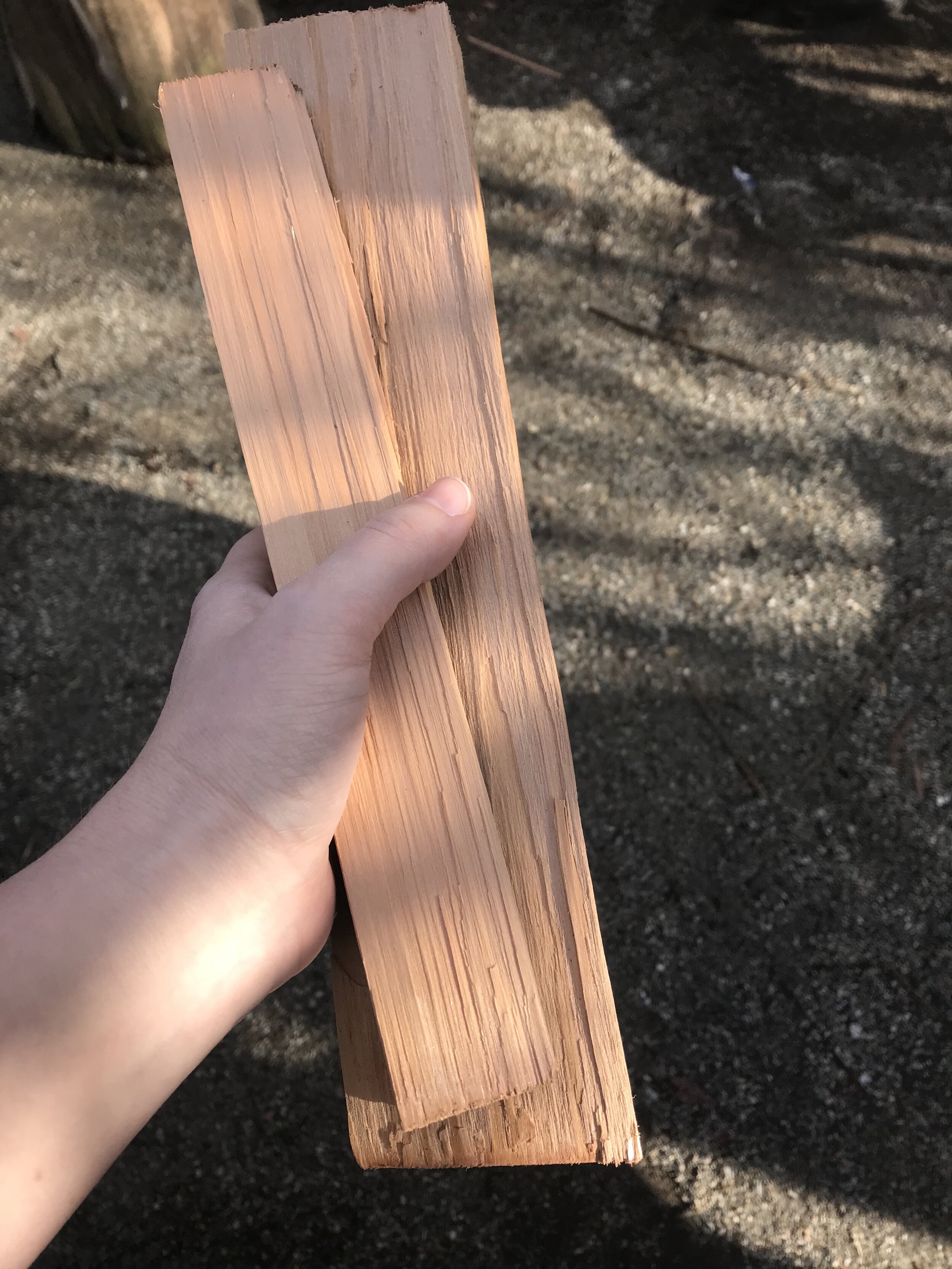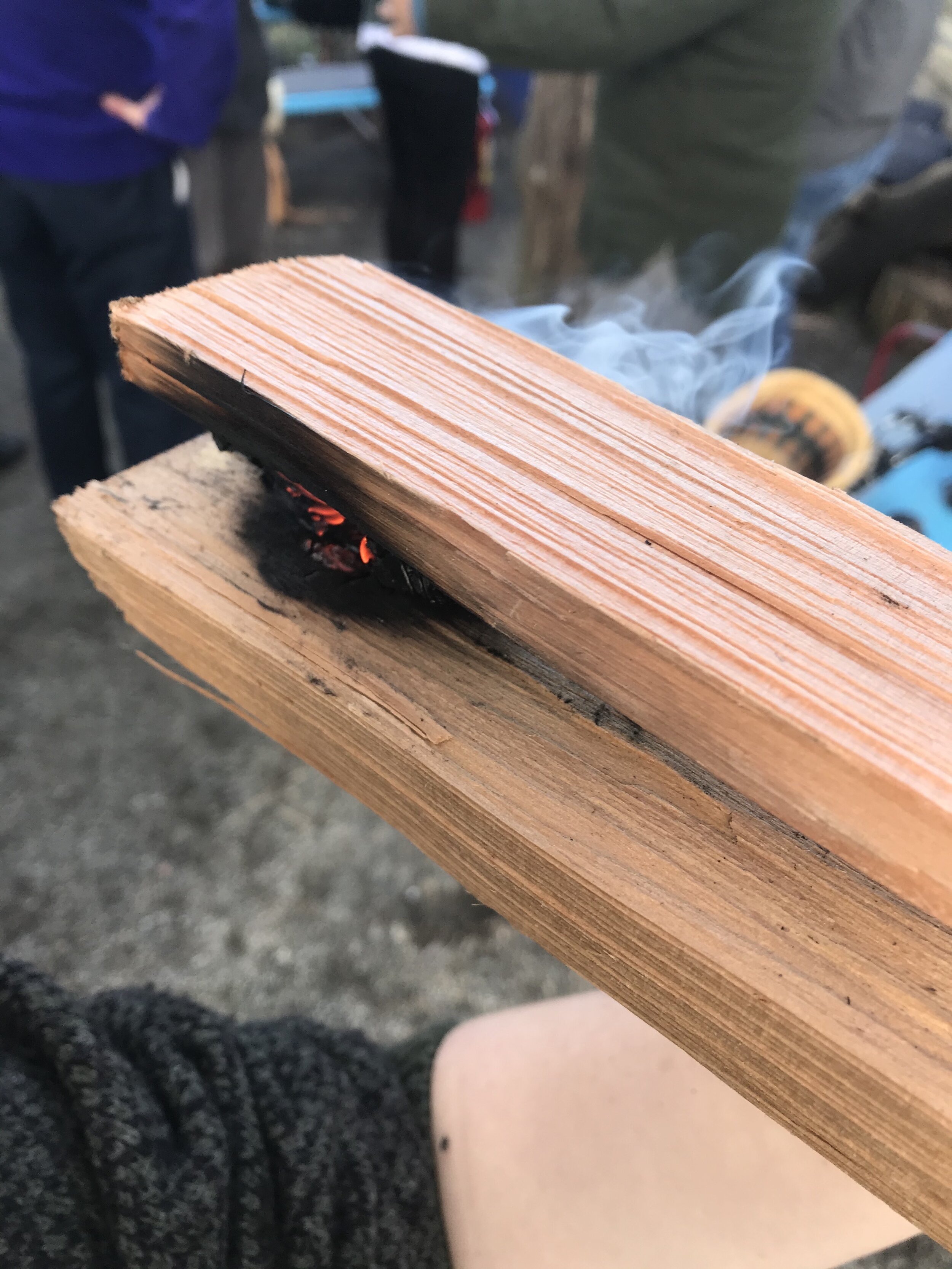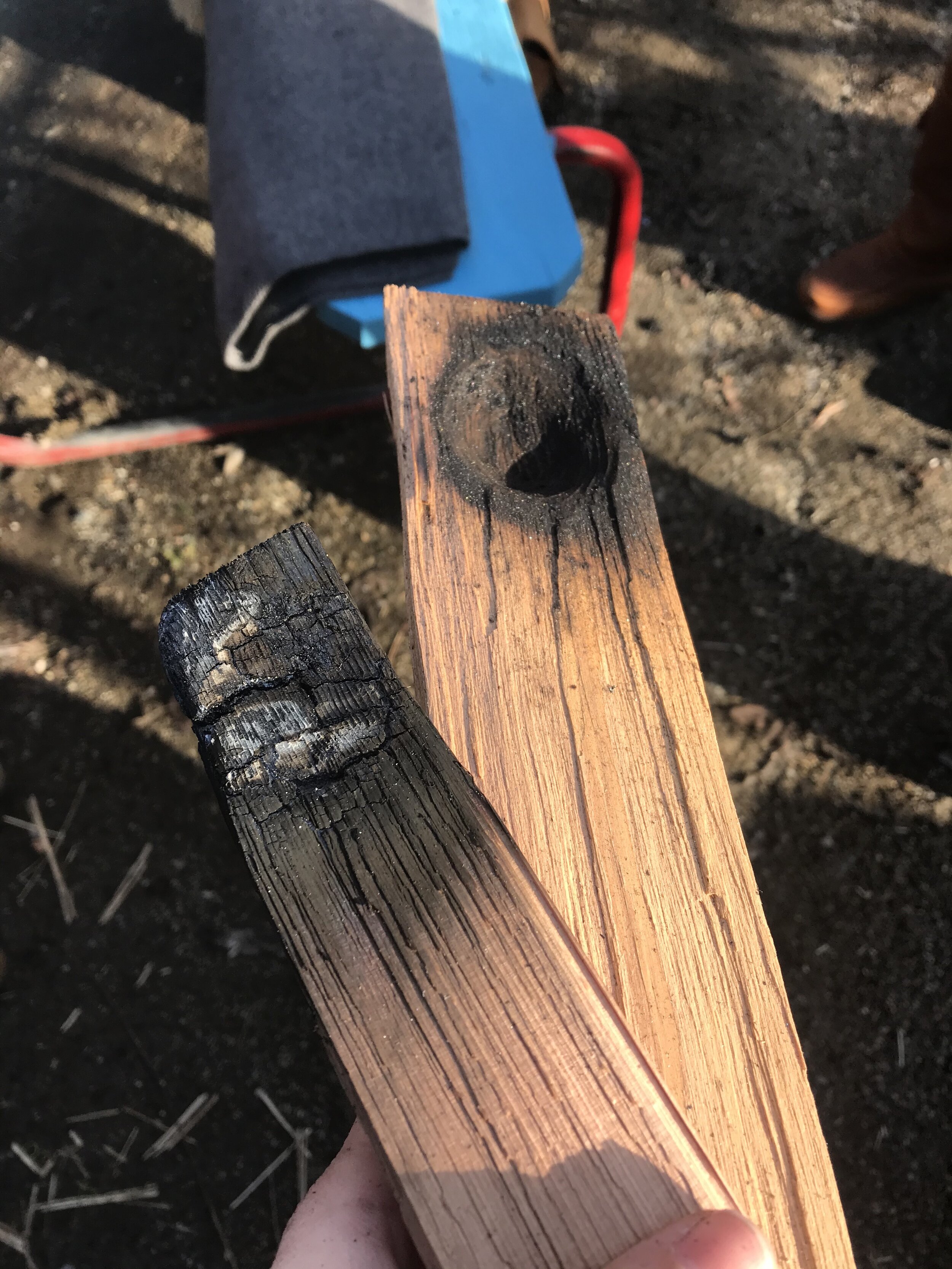Yesterday afternoon I spent a few delightful hours in a spoon carving workshop learning how to carve a cedar spoon with a bush knife and some hot coals. (Thank you to Delmar Williams of Squamish and Lil’wat Nations for teaching us and providing all the supplies and tools, and to Sharon Kallis of EartHand Gleaners Society for organizing and getting that all-important burn permit!)
I’m new to carving, and working with both knives and fire was exciting. As Delmar explained, when he teaches kids these techniques, it’s fun because he’s the guy who gets to come in and show them how to work with all the ‘dangerous’ things they’re supposed to avoid. The methods he showed us were not complicated on the face of them, but the actual execution took patience and the slow building up of skill through practice. We started with the coal burn-out method for the bowl of the spoon, which involves holding a piece of burning coal on your block of cedar (using another smaller piece of cedar to hold the coal in place), and feeding it air with your breath—or a helpful breeze—to keep it hot until you get a nice burned-in dish.
Easier said than done. Most of us struggled to keep our coals lit and burning long enough to make a dent. I kept getting a better light on my top stick than the one that was meant to be a spoon. When I did finally get a piece of coal going, I had to figure out how to keep a consistent breath on it and learn the rhythm of breathing and how to manoeuvre the wood and my head so that I didn’t accidentally suck in a big lungful of smoke or singe my lips on the occasional flame that caught. Eventually I got a good big piece of hot coal in there, found a place to stand where I could let the wind do some of the work for me, learned how to pace my breath and also how to shift the coal around so that I could get the size and depth of burn that I wanted.
When we were finally ready to begin carving, that was also a whole new skill set. I’ve never carved anything more substantial than a ham before this, but Delmar broke it down for us. As one of the other participants noted, it was more about the knife than the spoon. Delmar explained the anatomy of the knife and took us through the stages of spoon production and the different techniques needed for each. He told us that the material teaches you and, boy, did it. My biceps were throbbing after with all the learning imparted.
The application of knife blade to wood is something that would have unnerved me once upon a time. The piece of red cedar I was working felt important and special already (Delmar had said he never gives wood to anyone, he asks them to pick the piece that speaks to them). I’d put so much time into getting the bowl right. I wanted to be respectful of the material, of the teaching, and of my own investment of time, effort, and the tears I’d shed after many face-fulls of smoke. I expected to be awkward and unskilled with the blade, to make many poor cuts. I was hoping I wouldn’t do any significant “feeding the blade” (i.e., bleeding on it). There was nothing to do but start trying and hope I got better.
I did make many poor, awkward cuts, leaving divots as the blade skipped or caught or cracking off big pieces when I went in the wrong direction. I fed the blade just a little bit when I was working on rounding the the tip of the spoon and the knife slipped and I poked myself. As time in the afternoon got shorter, I tried not to rush, but I also wanted to make enough progress to learn all the techniques, knowing I’d need to do some finishing work on my own. I also tried to let the material teach me, both the wood and the knife. The wood was more dense in some places than others, harder to cut through, possibly because it had come from closer to the heart of the tree. Each new knife technique took time to wrap my head and my hand around, but repetition slowly eked out competence. The grain my knife strokes revealed was beautiful and I began to experiment with trying to highlight it, bringing the creativity of design along with the gradual mastery of technique. I made errors over and over and over again, sometimes setting back good work already done, but kept going.
About a year ago I was chatting with someone who had been learning to work with wood. He said found it powerfully healing because you do make mistakes and you can’t reverse them. The mistakes become part of it. You just keep going. I’ve also been taking improv classes and learning the same thing. Whatever happens, you work with it. Fix it by moving forward, not by trying to roll it back and erase it. Maybe you learn something from it, like what a better angle for the knife edge might be and how that should (or shouldn’t) feel in your hand. Maybe it’s a “happy failure”, in improv lingo, that creates an even funnier moment than the one you’d intended. You don’t barrel through oblivious to consequences (especially not when the consequence might result in stitches and not the “audience in stitches” kind), but hanging back isn’t an option because you only learn by trying, failing, learning, and trying again.
This goes for any space of uncertainty, which is most things we want to learn about. Even though carving might seem like a technical exercise with a specific tool and a set of techniques that can be learned and even (eventually) mastered, every piece of wood is different, holding different parts of the life of the tree it came from, still living and changing in moisture content as it seasons. The fire of the coal and the air that helps it burn, both breeze and breath, have their own life, and improvise with the wood to shape the bowl. Every knife cut works with the wood and the cut that came before, influencing the conditions for the cut that will come next. The hands that hold the wood and the knife, the arms that hold those hands, and the body that holds it all, are all changing, moving, getting tired as the time passes, getting stronger and more skillful too, learning from the teacher, learning from the other students, and learning from the material—knife, wood, and self.
The learning is in the doing, and the doing includes mistakes. If we aren’t making mistakes, we aren’t doing enough and we won’t be learning much either.
Blade fed. Lesson learned (and embodied).





